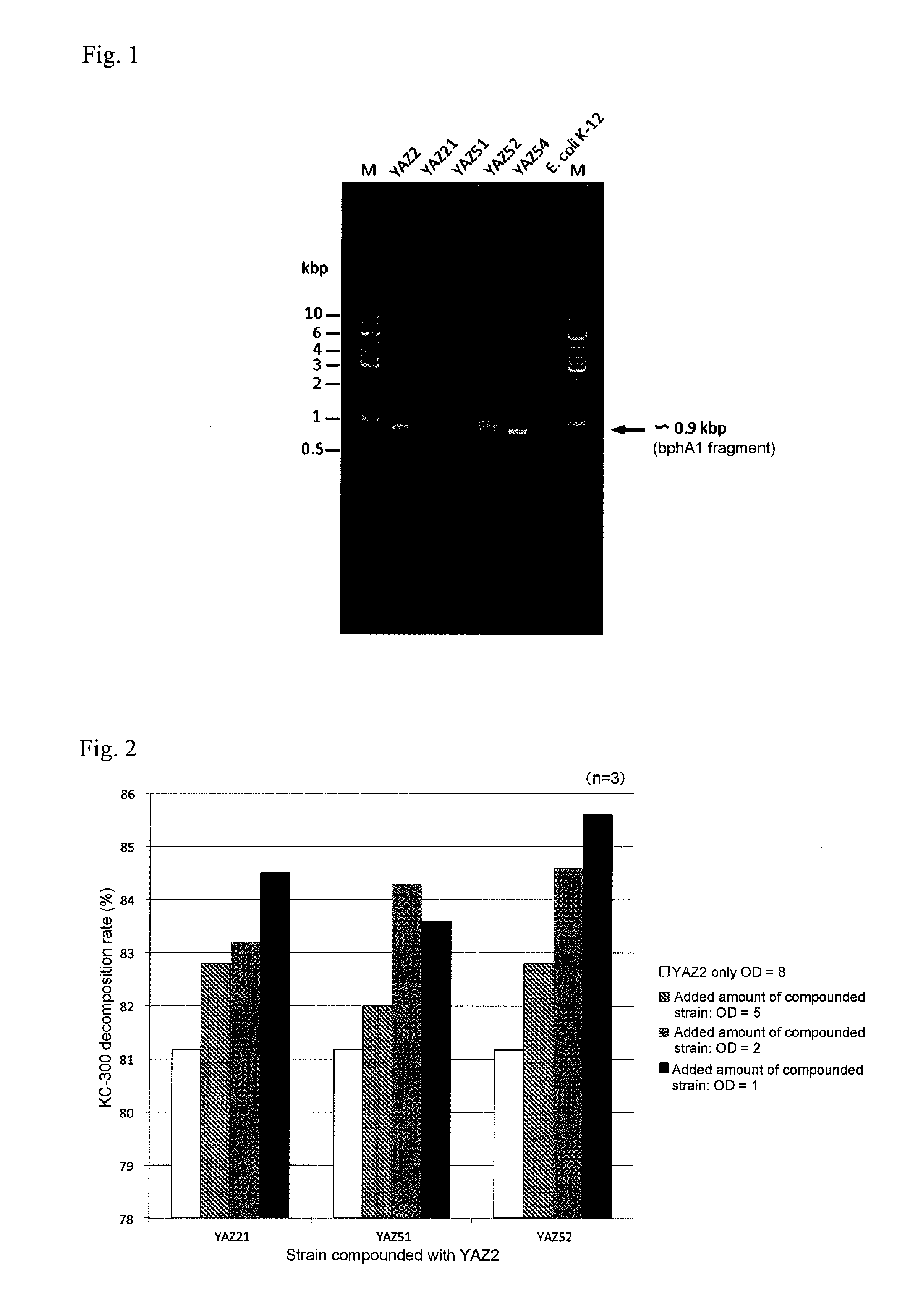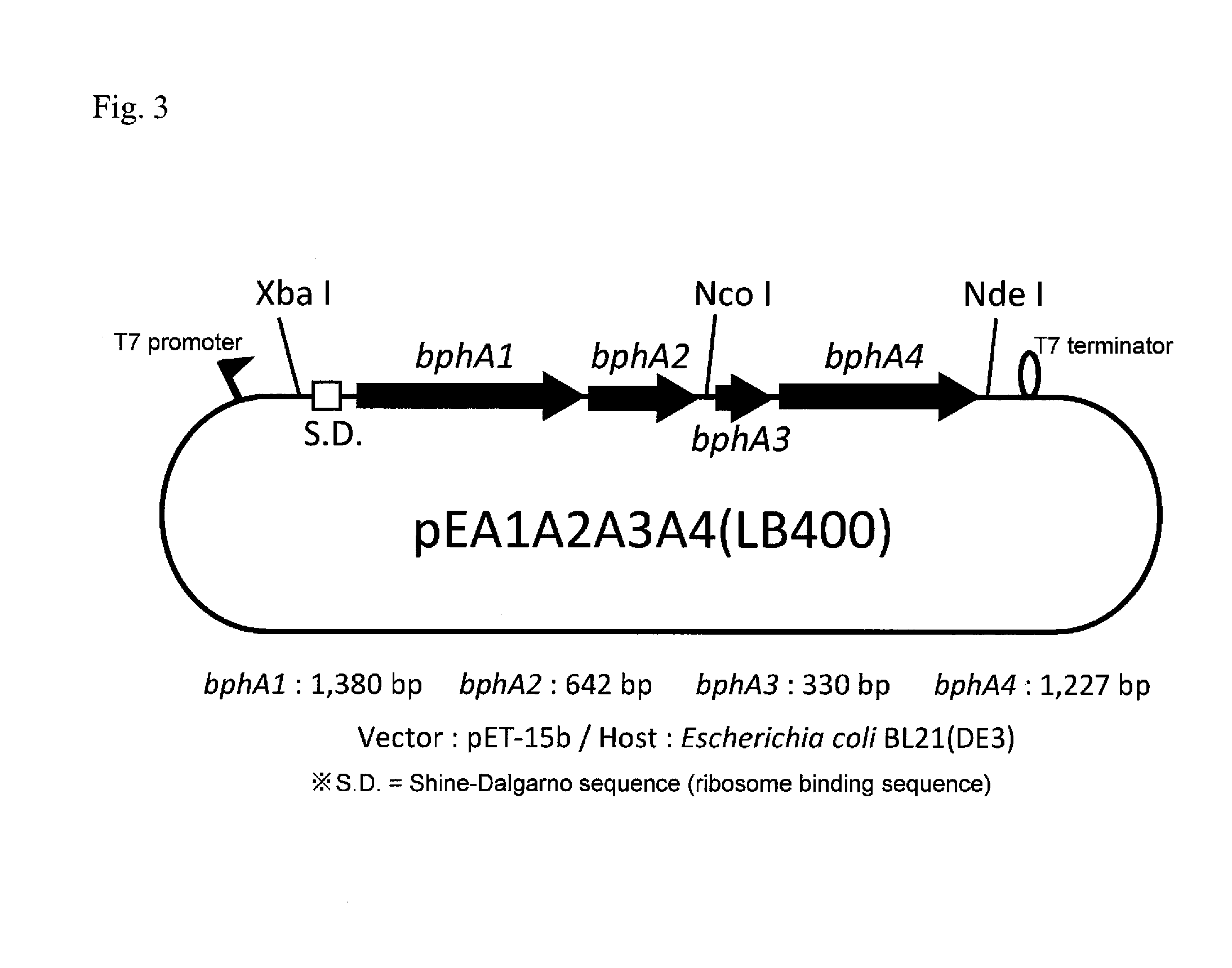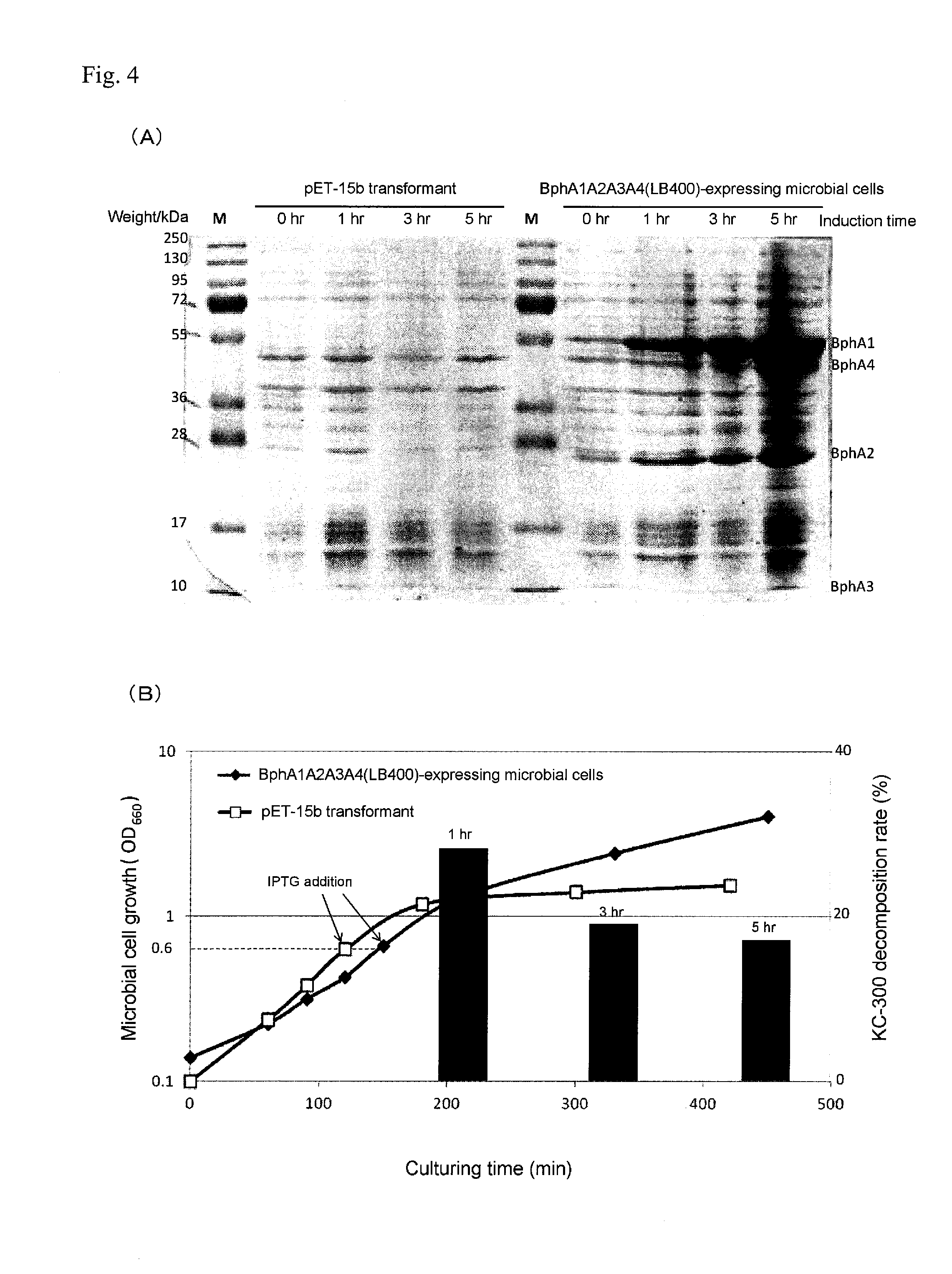Polychlorinated biphenyl detoxifying complex composition and method for manufacturing same
a polychlorinated biphenyl and complex composition technology, applied in the direction of oxidoreductases, biochemistry apparatus and processes, enzymes, etc., can solve the problems of serious effects not only on humans, but also on various forms of life present on the entire planet, and the cost of this detoxification is high, so as to achieve improve the effect of pcb decomposition efficiency and high pcb decomposition activity
- Summary
- Abstract
- Description
- Claims
- Application Information
AI Technical Summary
Benefits of technology
Problems solved by technology
Method used
Image
Examples
example 1
Screening for Biphenyl-Assimilating Microorganisms
[0074]Synthetic medium (W medium) used for screening was composed as shown below with reference to the description of Non-Patent Document 4 in the same manner as the method indicated in Japanese Patent Application No. 2012-046270 filed by the present applicant and in its unexamined publication in the form of Japanese Unexamined Patent Publication No. 2013-179890.
TABLE 3ComponentContentKH2PO41.7g / LNa2HPO49.8g / L(NH4)2SO41.0g / LMgSO4•7H2O0.1g / LFeSO4•7H2O0.95mg / LMgO10.75mg / LCaCO32.0mg / LZnSO4•7H2O1.44mg / LCuSO4•5H2O0.25mg / LCoSO4•7H2O0.28mg / LH3BO30.06mg / Lconc. HCl51.3μl / L
[0075]Medium having an indicated pH of 6.3 to 8.5 was prepared and biphenyl was added thereto as a carbon source at a final concentration of 0.1%. Samples measuring about one teaspoon were collected from soil in the city of Yonezawa and its surrounding area were added to the medium followed by shake-culturing for about 1 week to 1 month at 30° C. and 120 rpm. A procedure con...
example 2
Detection of Biphenyl Dioxygenase Genes of Consisting of Strain YAZ2, YAZ21, YAZ51, YAZ52 and YAZ54
[0077]Degenerate primers were prepared by selecting several highly preserved regions (such as Asn-Gln / Ser-Cys-Arg / Ser-His-Arg-Gly-Met (SEQ ID NO: 1) or Glu-Gln-Asp-Asp-Gly / Thr-Glu-Asn (SEQ ID NO: 2)) based on a comparison of the amino acid sequences of the BphA1 (biphenyl-2,3-dioxygenase α-subunit) of known PCB-decomposing bacteria consisting of Burkholderia xenovorans strain LB400, Pseudomonas pseudoalcaligenes strain KF707, Acidovorax sp. strain KKS102, Rhodococcus jostii strain RHA1, Rhodococcus erythropolis and Bacillus sp. strain JF8. Microbial cells centrifugally harvested from 0.1 ml to 1.2 ml of culture broth obtained by culturing each of the microbial strains of Comamonas testosteroni strain YAZ2, Achromobacter sp. strain YAZ52, Pseudomonas sp. strain YAZ51, Rhodococcus sp. strain YAZ54 and Stenotrophomonas sp. / Achromobacter sp. symbiotic strain YAZ21 to an OD660 of 0.6 to 1.0...
example 3
Decomposition of Polychlorinated Biphenyls by Compounding Microorganisms
[0078]A required amount of a microbial composition obtained by adding Pseudomonas sp. strain YAZ51 or Achromobacter sp. strain YAZ52 to Comamonas testosteroni strain YAZ2 and compound therewith was preliminarily weighed out and added to 20 mM phosphate buffer solution to obtain a composition solution. The final concentration of the composition solution can be determined by measuring turbidity (OD660), or the composition solution can be finely adjusted to a suitable concentration with 20 mM phosphate buffer solution. Moreover, a commercial polychlorinated biphenyl mixture in the form of Kanechlor KC-300 was added to the composition solution followed by aerating by inverting for 25 hours at a temperature of 30° C. to decompose PCBs.
TABLE 4Complementary strainYAZ51YAZ52OD =OD =OD =OD =Main strain5757Decomposition rate76.1—77.8—YAZ2OD = 880.4—80.2—82.0OD = 10—82.0—83.7—
[0079]Decomposition rates (%) are shown after r...
PUM
| Property | Measurement | Unit |
|---|---|---|
| temperature | aaaaa | aaaaa |
| pH | aaaaa | aaaaa |
| temperature | aaaaa | aaaaa |
Abstract
Description
Claims
Application Information
 Login to View More
Login to View More - R&D
- Intellectual Property
- Life Sciences
- Materials
- Tech Scout
- Unparalleled Data Quality
- Higher Quality Content
- 60% Fewer Hallucinations
Browse by: Latest US Patents, China's latest patents, Technical Efficacy Thesaurus, Application Domain, Technology Topic, Popular Technical Reports.
© 2025 PatSnap. All rights reserved.Legal|Privacy policy|Modern Slavery Act Transparency Statement|Sitemap|About US| Contact US: help@patsnap.com



